Get this deal! Call now.
Speak with a vehicle protection plan specialist and get $300 off any new contract instantly.
Call 866-678-4172
or scan the code below

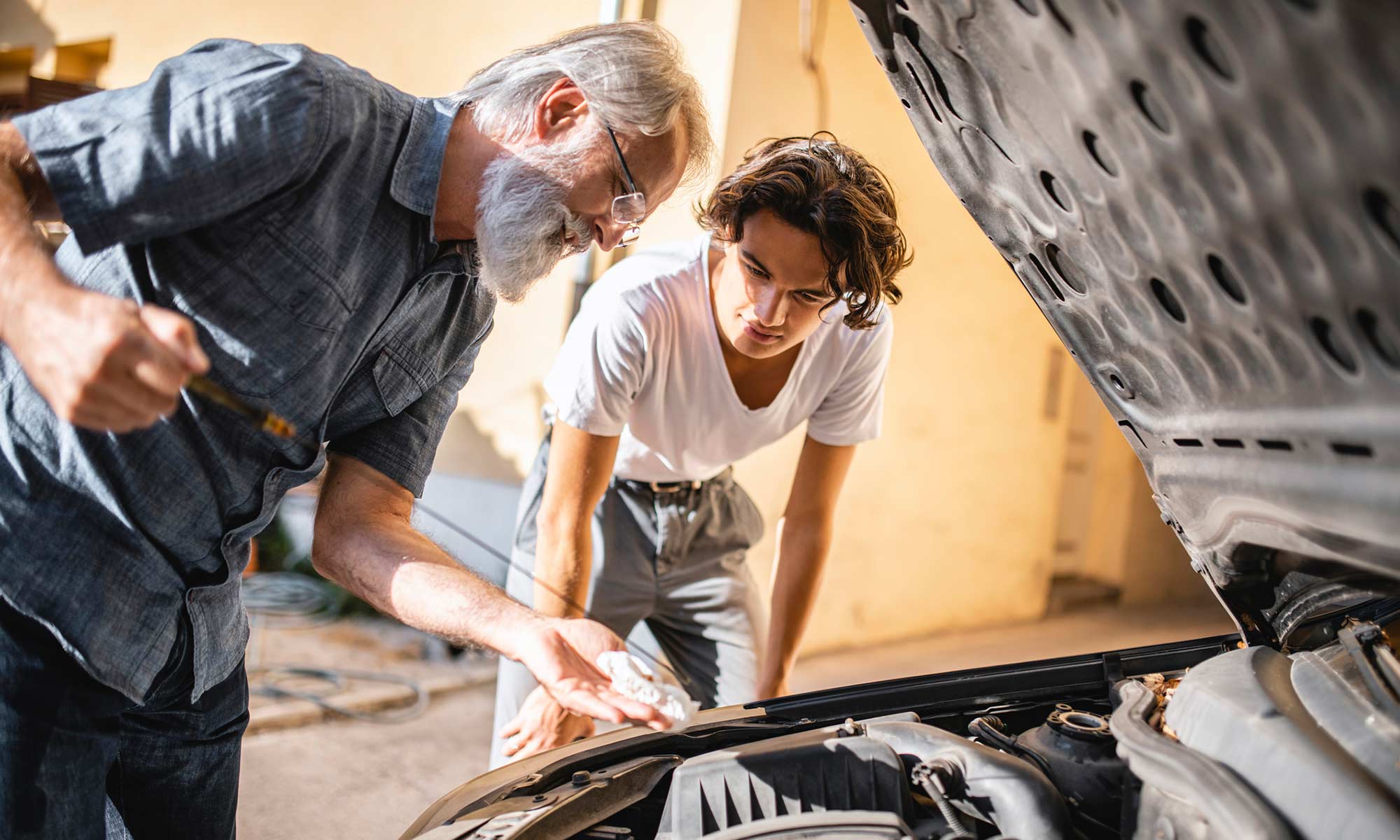
Owning a vehicle is an exciting time for anyone – from first cars, dream cars, and everything in between. Regardless of the car, truck, or SUV you own, the secret to keeping any vehicle running for years to come is preventative maintenance.
For car owners, staying up-to-date on maintenance needs can help protect a vehicle from potential breakdowns and expensive car repairs down the road. And, while some services are best left to the professionals, vehicle maintenance doesn’t have to be a mystery. In fact, many essential maintenance tasks allow you to do it yourself without visiting an auto repair shop or ASE Certified mechanic.
Keep your vehicle running properly for longer with these 10 DIY car maintenance tips:
Your tire’s air pressure (also known as PSI) is one of the easiest things you can check on your car. It is also one of the first things you should check at the start of each season, as temperature changes can affect the pressure in your tires. Poorly inflated tires can lead to potential issues, such as a tire blowout, suspension issues, and even less gas mileage.
You can purchase a tire pressure gauge at any auto parts store or online to check your car’s PSI. Simply take the cap off the tire valve and briefly place the tester on the connector to test the pressure. The gauge will display the pressure in the tire, and you can fill it up from there with a compressor at a gas station.
If you are unsure of the correct PSI that you should have, your owner’s manual may be able to help. The maximum tire pressure will also often be printed on the tires themselves. You can also usually find the recommended tire pressure on a sticker inside placed on the driver’s side door frame.
As with all heavily used components of any vehicle, your tires will eventually begin to wear down over time. With poor tire tread, your vehicle will have less control while on the road. This can be especially dangerous during or after a rainstorm or in other inclement weather. Black ice in the wintertime can also pose a severe risk to vehicles with poor tire tread.
To avoid this, you can inspect your tire tread in just a few seconds by using the “penny trick.” Simply insert a penny with President Lincoln’s head upside-down into the gap between the tread blocks. If you can see the top of Abe’s head, you should replace your tires as soon as possible.
You can protect your tires with the help of a vehicle protection plan like EnduranceAdvantage™. Each EnduranceAdvantage package comes with comprehensive breakdown protection and a bonus of up to $3,500 in regular maintenance coverage. Rest easy knowing services such as PSI checks and tire rotations are covered under your auto protection plan. New Endurance customers also receive 1 year of Elite Benefits for free, including perks like 2 tire repairs or replacements per year, key fob replacement, 24/7 roadside assistance, and more.
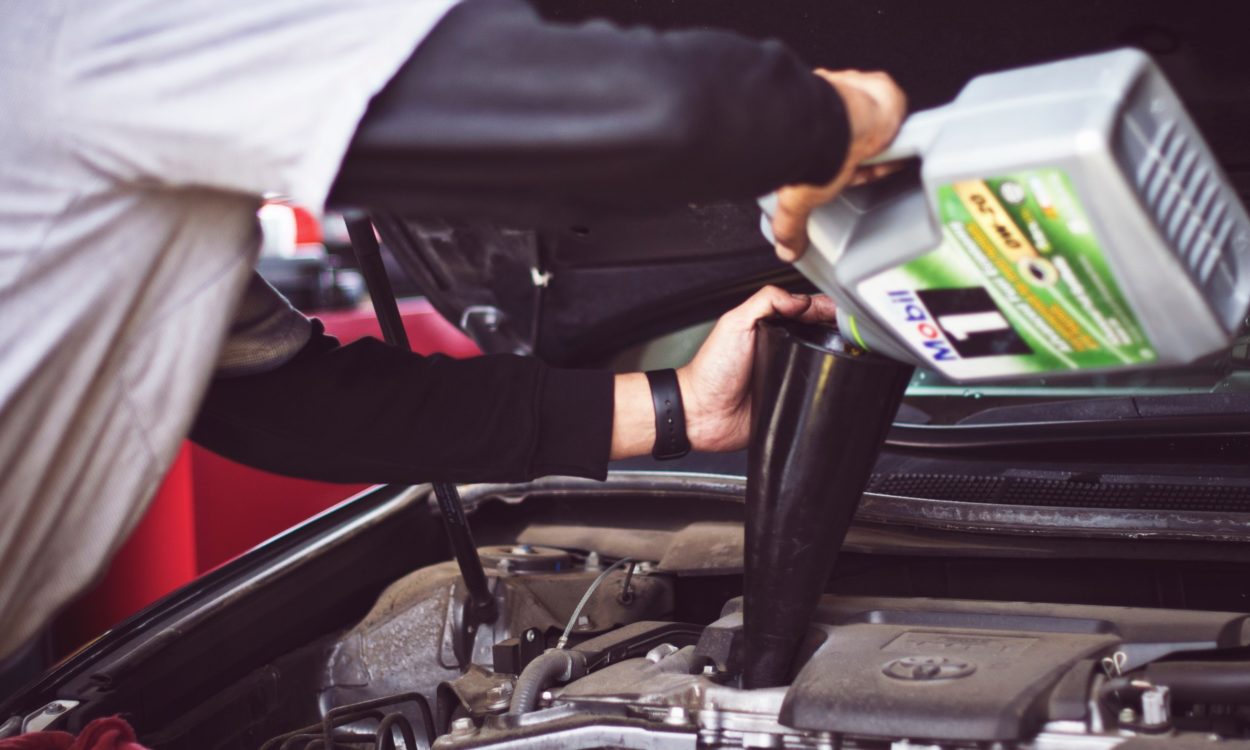
Staying hydrated isn’t just great advice for people; it’s the same for your car. Not having enough essential fluids or letting the fluid get dirty can cause serious damage to the components of your car. Some of the essential fluids you will need to check are the engine oil, transmission fluid, engine coolant, power steering fluid, brake fluid, and windshield wiper fluid.
Each of these fluids should be checked regularly by looking at the reservoirs in the engine compartment and measuring their levels using a tool called a dipstick. If you are unsure of where to find them on your vehicle, your owner’s manual should be able to help. However, for most vehicles, the engine oil and transmission fluid dipsticks are usually located on the right side of the engine compartment.
To check these fluids, simply take your vehicle’s dipstick and ‘dip’ them into the fluid reservoirs. Next, remove the dipstick and check if the fluid comes up to the markings found on the dipstick. These will help tell you how much fluid you have left. If you cannot see any fluid on the dipstick once removed, you can either add more of the specific fluid or change the fluid completely.
Save money when it comes to checking your vehicle’s essential fluids with the EnduranceAdvantage vehicle protection plan. Along with protecting your car in the event of an unexpected breakdown, EnduranceAdvantage also comes with annual service coverage, including up to 3 oil and filter changes per year.
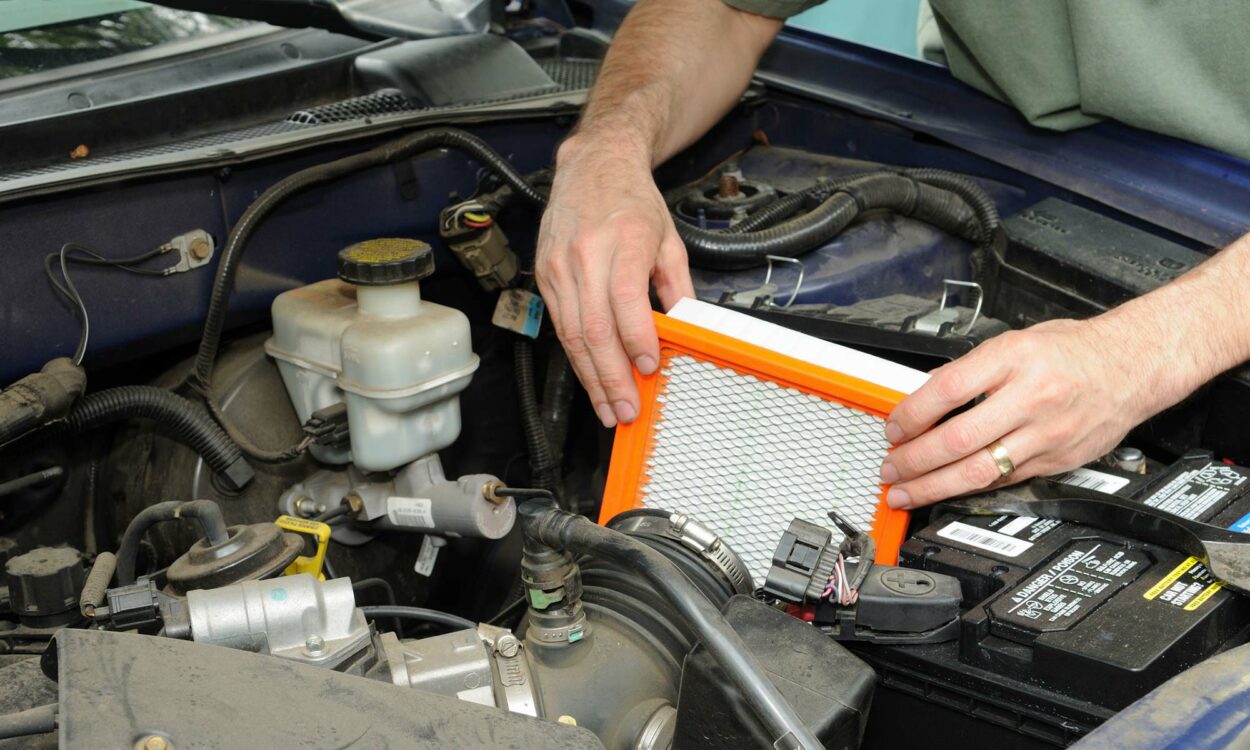
Your engine air filter catches impurities from entering your engine when in use. Without a properly functioning engine air filter, you could be left with several problems, such as decreased engine performance, decreased fuel economy, or general ignition issues.
As your car’s engine is also the critical component in making it run, check and replace this filter regularly to ensure it doesn’t get clogged. This filter is located towards the front of the engine compartment inside a rectangular plastic box. To quickly tell if your engine air filter is clean or dirty, check its color. Newer air filters will be more white or another vibrant color. Air filters in need of replacement will often be grey or discolored. If your engine air filter is ready to be replaced, you can purchase a new one at any automotive store for between $20 and $40.
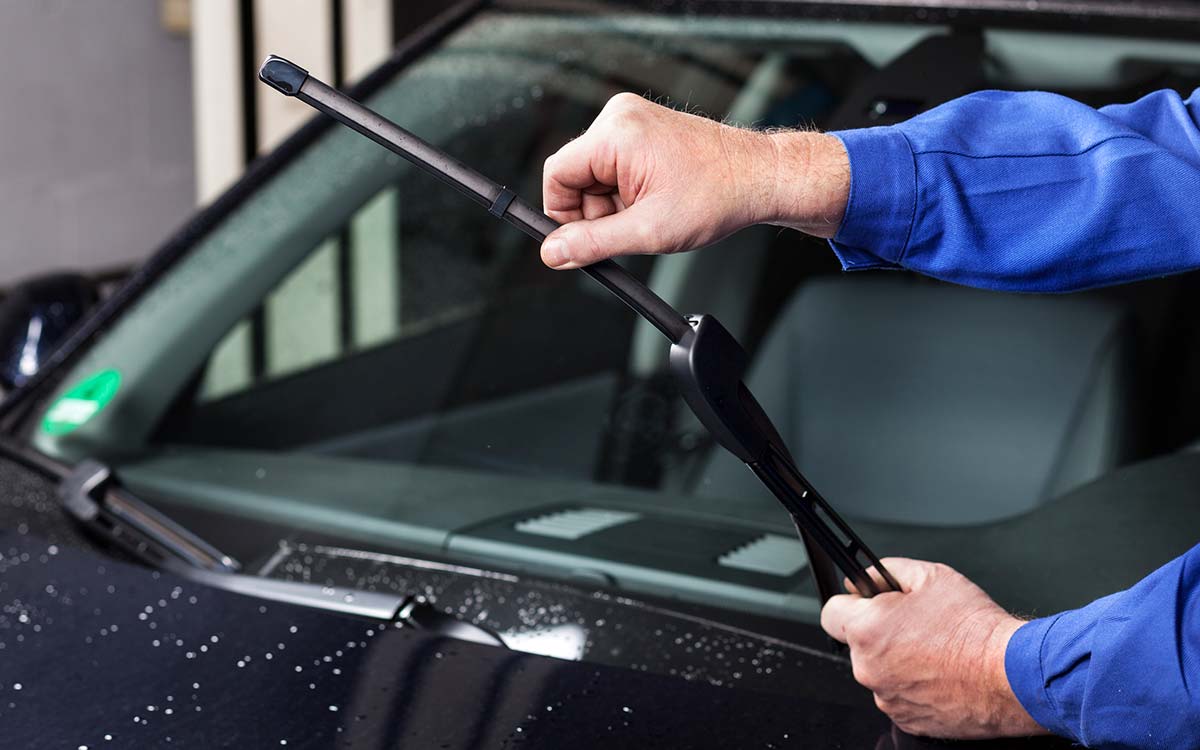
Staying safe while on the road goes without question, especially during the fall and winter months. One of the best ways to help you stay safe when faced with rain, snow, and sleet is with working wiper blades.
For most vehicles, your windshield wiper blades need to be replaced at least once a year. For those who live in areas with more frequent rain, you should look to replace your wiper blades more frequently. To know if your blades may need to be replaced, simply check to see if they are cracked or damaged. Streaking on your windshield can also be a tell-tale sign your wiper blades need to be replaced.
To replace yours, first, check your vehicle’s owner’s manual to see what size blades you need. Then, you can lift the wiper up and away from the windshield. There should be a plastic hook holding the blade to be moved to remove the old blade. Then, you can simply snap the new wiper blade into place.
You can also save on the cost of a front or rear wiper blade set replacement with EnduranceAdvantage. Wiper blade replacement is one of many special, single-use services under each EnduranceAdvantage vehicle protection plan. Gain peace of mind for the road ahead with comprehensive break coverage and unrivaled maintenance benefits.
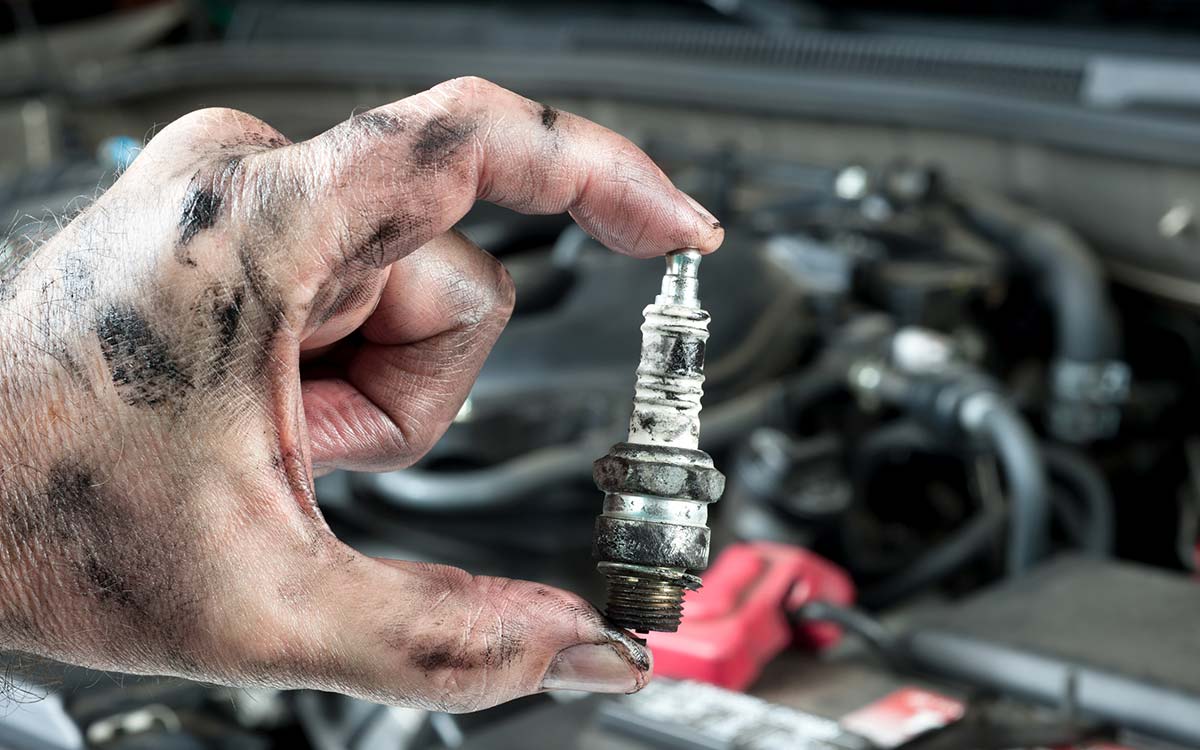
An often-overlooked maintenance task for many car owners is maintaining their spark plugs. As a critical component in allowing your vehicle to start, you should change your vehicle’s spark plugs once every 30,000 miles.
To do this, you can usually find your spark plugs located on the top of the engine block, which will have plug wires connected. Take the negative terminal off your battery and then remove the plug wires. From there, you should be able to unscrew the old spark plugs and put the new ones in. Changing your spark plugs is also a relatively inexpensive maintenance procedure to do, as a new set of spark plugs for a vehicle such as a Cadillac Escalade will only cost between $127 and $148.
Like your engine, your car’s battery will also need some minor maintenance to help avoid potential issues. One of the most straightforward DIY tasks you can do is clean your battery’s terminal posts.
Without proper cleaning, a buildup can occur that can disrupt the connection to the battery terminals and impede the charging of the battery from the alternator. This buildup will often look like white and green dust that forms around the battery’s cable clamps and underneath them. You can clean your terminals by disconnecting the cable clamps and scrubbing them with a dry wire brush.
As a critical safety component of any car, truck, or SUV, your brakes should be one of the most thoroughly inspected parts of your vehicle. Brake pads especially need to be replaced at least once every 40,000 miles. You will know that the time has come for a new set of brake pads if you notice things like squeaking when you apply the brakes or vibrations when turning.
Keep your brakes working properly with an auto protection plan such as EnduranceAdvantage. This vehicle protection package offers breakdown protection for your vehicle’s most vital components – and up to $3,500 in yearly maintenance coverage! You can also utilize special, one-time services included in the plan, such as brake pad or shoe replacement. With EnduranceAdvantage, you’ll keep money in your pocket and drive worry-free.
The interior cabin of your car has an air filter just like the engine does. This filter also works similar to your engine’s as it filters out dust, dirt, and debris from your A/C system. Also, like your engine air filter, your cabin air filter needs to be replaced regularly, with most vehicle manufacturers recommending once every 15,000 miles.
While your vehicle’s make and model will determine where your cabin air filter is located, they are usually found in the glovebox behind the back panel. You may also find them in the engine compartment close to the firewall. Like your engine air filter, the cabin filter should be white or off-white when it is new and will be discolored and dirty when it needs to be replaced.
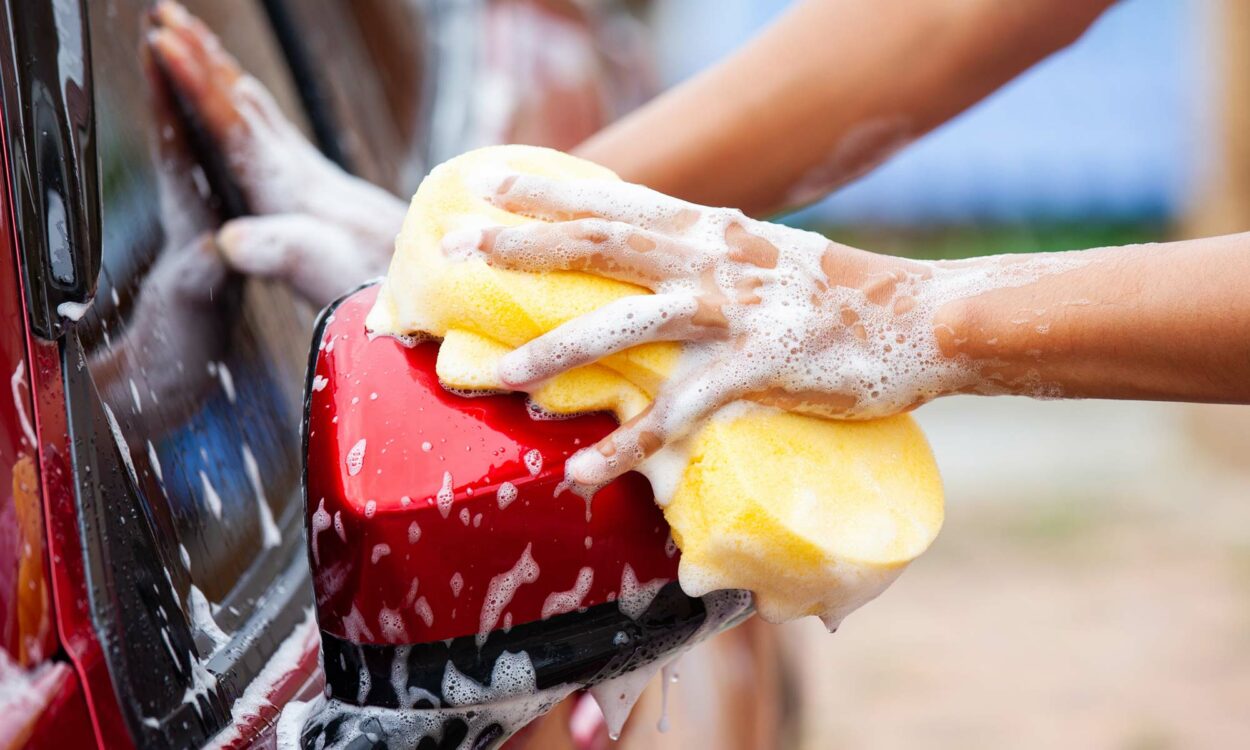
Believe it or not, cleaning your car is one of the most effective car care procedures you can perform. Regardless of whether you have a used vehicle or a brand new car, regular washing and cleaning will help you avoid potential issues like rust. Washing will also keep dirt and grime off the more delicate components like the ABS sensors and O2 sensors. A clean vehicle also gives you a chance to thoroughly inspect your vehicle and make sure it is in good condition. It’s recommended that you wash and deep clean your vehicle once every two weeks. More frequent washes are recommended for heavily used vehicles, such as a Ford F-150 or GMC Sierra at a job site. However, it’s important to keep in mind that it is possible to wash your car too much. It can result in “spider webbing,” which looks like small cracks in your vehicle’s finish that spread out from a central point.
Stay up-to-date with your car’s regular maintenance schedule – it’s the best way to ensure that your vehicle lasts as long as possible. Adding in an auto protection plan like EnduranceAdvantage can give you even more peace of mind regarding the longevity of your car. With breakdown protection and up to $3,500 worth of regular maintenance coverage, you can have essential services like oil changes, tire rotations, and more covered under your EnduranceAdvantage plan. Each EnduranceAdvantage package also comes with special, one-time maintenance services for even more coverage and savings.
Endurance customers also receive 1 year of Elite Benefits for free with the purchase of any protection plan. Perks include two tire repairs or replacements per year, 24/7 roadside assistance, up to $1,000 in total loss protection, and more. Drive confidently knowing Endurance has you covered.
For more details about Endurance auto protection plans, request a free quote. Visit our Learning Center for more informative articles from auto experts on make/model comparisons, extended warranties, answers to common questions, and more.

We're here to make sure you get the most comprehensive EV protection. That's why we've partnered with Xcelerate Auto to offer you transparent and dependable Tesla coverage.
Want us to contact you about XCare coverage for your Tesla?



Call for $300 off any new plan!
By clicking the button, you consent to Endurance using automated technology to call, email, and text you using the contact info above, including your wireless number, if provided, regarding auto protection or, in California, mechanical breakdown insurance. You also agree to the Endurance Privacy Policy and Terms and Conditions. Consent is not a condition of purchase, and you can withdraw consent at any time. Message and data rates may apply.
Speak with a vehicle protection plan specialist and get $300 off any new contract instantly.
Call 866-678-4172
or scan the code below



Simply fill out the information below and we will follow up fast with your free no-obligation quote.
By clicking the button, you consent to Endurance using automated technology to call, email, and text you using the contact info above, including your wireless number, if provided, regarding auto protection or, in California, mechanical breakdown insurance. You also agree to the Endurance Privacy Policy and Terms and Conditions. Consent is not a condition of purchase, and you can withdraw consent at any time. Message and data rates may apply.

To speak to a vehicle protection plan specialist and save $300
Scan the code below
Since the age of 16, Keith has been immersed in the automotive industry, beginning his career by helping his dad fix vehicles at a young age. Keith now owns his own family-run, ASE Certified repair shop, A+ Autocare. At his shop, he focuses on building trusting relationships with his community through exceptional customer service. Read more about Keith.